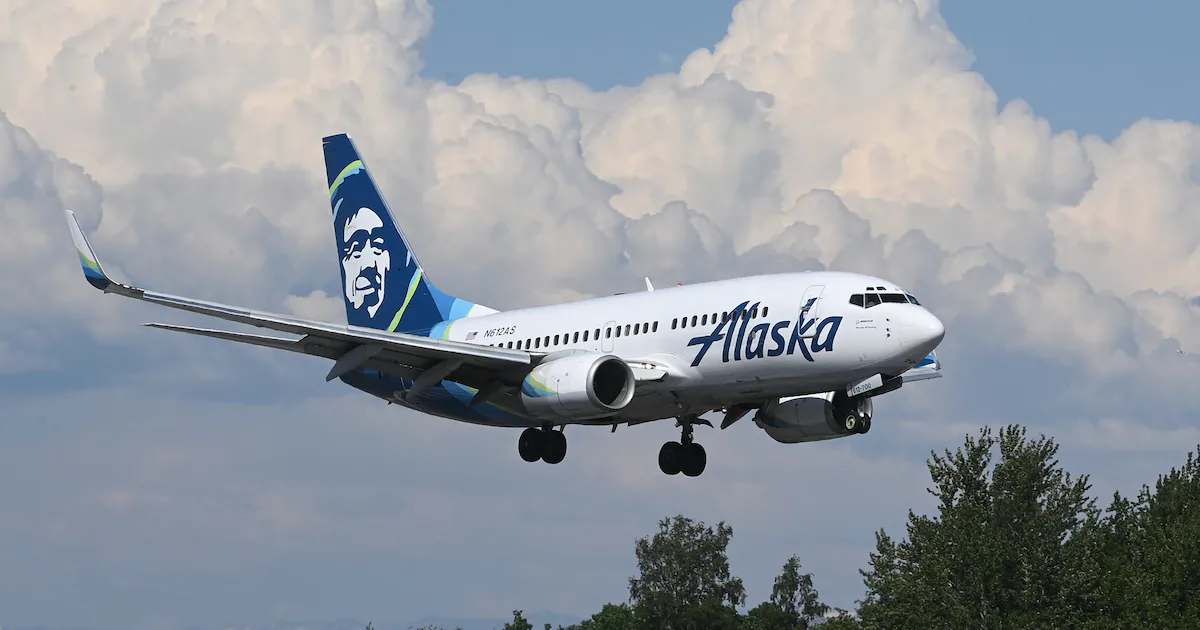Copyright Anchorage Daily News

SEATTLE — Alaska Air Group’s profits dropped in the third quarter this year as the airline navigated an IT outage that briefly took down its network, and a summer of thunderstorms on the East Coast. Alaska reported net income of $73 million, or 62 cents per share, in the three months from July through September, a drop from net income of $236 million, or $1.84 per share, in the same time period last year. The IT outage — which grounded Alaska’s fleet for three hours in July and kicked off roughly four days of flight disruptions as the airline rebooked passengers — likely lowered Alaska’s earnings per share by about 10 cents, the company said shortly after the incident. “It seemed like for the entire month of July operations were challenging,” Ryan St. John, Alaska’s vice president of investor relations, said in an interview. The IT outage created a challenge for the operation, then every week there was something going on in the air traffic control system that just kept compounding on itself. “All of that was unexpected. You typically expect the summer to be a pretty weather free operation. Thunderstorms were worse than normal.” On Oct. 23, Alaska experienced another IT outage that grounded all flights. It wasn’t immediately clear what caused the outage. Despite the turmoil, the airline had a lot of bright spots in the third quarter. Total operating revenue increased 23% to $3.8 billion, compared with $3 billion in the same quarter last year. Cargo revenue increased 27% while premium revenue, the number of people willing to pay more for seats with extra leg room and other perks, increased 5%. Revenue from corporate travel increased 8%, driven by fewer cost cuts from tech companies like Meta and Microsoft compared with this time last year, St. John said. Boeing also resumed corporate travel after cutting back last year when it faced a strike at its Puget Sound-area factories, he said. Alaska celebrated the launch of a new loyalty program and credit card this quarter, part of its long-term plan to grow into an international, long-haul carrier following its acquisition of Hawaiian Airlines in September 2024. St. John declined to share how many people had signed up for the new program and credit card, but said Alaska exceeded its year-end goal in just two weeks. A quarter of the sign-ups were from customers beyond the West Coast and Hawaii, St. John said. About 10% of sign-ups were people who were not already part of Alaska or Hawaiian’s loyalty program. In the third quarter, credit card sign-ups increased 48% year over year, a massive increase for a metric that the industry generally sees record a 5% yearly increase. Cash coming to Alaska from the credit card and loyalty program increased 8% year over year. Alaska notched new milestones in its merger with Hawaiian, including receiving final approval from regulators to operate under a single operating certificate. That essentially means the government will consider the two airlines as one. It also launched a new combined reservation system. Passengers will use the new system when booking flights for April 22 and beyond. Alaska spent $154 million on costs related to integrating Hawaiian into its network in the first nine months of this year, including $61 million in the third quarter. St. John said the airline will continue to record costs next year, but said a lot of the heavy lifting is almost done. “Going forward that amount of spend will be less, because there’s not as much left to do,” he said. Meanwhile, Alaska sold eight Boeing 737-900s that were nearing retirement in the third quarter. Alaska was the launch customer for the 737-900, meaning it was the first airline to take delivery of the first planes Boeing rolled out in the early 2000s. The planes that Alaska sold were the oldest 737-900s, before Boeing introduced an extended range variant just a few years later. Alaska found buyers for all of the aircraft and was able to sell them for “more than they were worth on the books,” adding a small bump to Alaska’s earnings, St. John said. The airline doesn’t have plans to sell any more aircraft in the near future, St. John said, adding that they don’t expect any aircraft retirements for the next few years. Alaska expects fourth quarter earnings per share of at least 40 cents, with volatile fuel costs dampening expectations.



